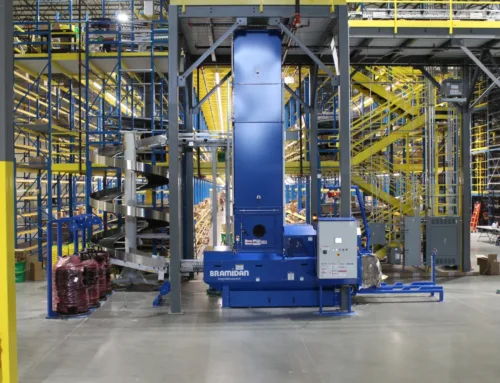
Routine maintenance for bakery equipment is essential for keeping operations smooth and preventing costly breakdowns. In this post, I will cover cleaning protocols, preventive maintenance strategies, and common equipment repairs. By following these guidelines, you can ensure your machinery runs efficiently, leading to consistent product quality and reduced downtime. If you’ve faced unexpected equipment failures or increased maintenance costs, this content will provide actionable insights to mitigate those issues and enhance your bakery’s productivity.
Importance of Routine Maintenance for Bakery Equipment

Understanding the impact of routine inspections on equipment longevity is essential for any bakery relying on convection ovens and other bakery equipment. Regular care not only minimizes operational downtime but also ensures compliance with food safety regulations. I will cover the specifics of maintaining ventilation, conducting thorough checks, and creating a reliable cooking environment to keep your bakery running smoothly. If you need assistance, contact us.
Understanding the Impact on Equipment Longevity
Understanding the impact of routine maintenance on equipment longevity is vital for the success of any bakery. Regularly inspecting and cleaning critical components, such as condensers and convection ovens, helps prevent the buildup of debris, which can hinder performance and pose food safety risks. By prioritizing sanitation in your maintenance routine, I have found that not only does this extend the lifespan of your equipment, but it also minimizes expensive repairs and ensures a consistent baking environment.
Reducing Operational Downtime Through Regular Care
Regular care and preventative maintenance are crucial in reducing operational downtime for bakery equipment. I have noticed that addressing wear and tear through timely inspections and using appropriate lubricants can prevent unexpected breakdowns, helping to maintain a consistent production flow. Implementing a maintenance contract can also ensure that your equipment receives the attention it needs, further minimizing any disruptions to your baking operations.
Ensuring Food Safety and Compliance With Regulations
Maintaining bakery equipment is essential to ensure food safety and meet health regulations. I have experienced firsthand the importance of regularly inspecting heating elements and ensuring they are functioning properly to prevent any risk of contamination. Incorporating equipment maintenance into your routine, including cleaning surfaces with appropriate soap and regularly checking dough preparation areas, helps uphold hygiene standards and demonstrates compliance with food safety regulations.
Routine maintenance keeps machines alive and working well. Now, let’s look at the right cleaning protocols that ensure these tools remain sharp and ready for every bake.
Cleaning Protocols for Bakery Machines

Daily cleaning tasks for essential bakery equipment, such as bun ovens and mixers, are crucial for maintaining hygiene and performance. I will outline a monthly deep cleaning checklist to ensure thorough inspections of all bakery machines. Additionally, I’ll recommend effective cleaning agents and techniques that bakers can use to uphold food safety standards. By following these protocols, I believe that we can achieve consistent results and ensure a safe baking environment.
Daily Cleaning Tasks for Essential Equipment
In a commercial bakery, I emphasize the importance of daily cleaning tasks for essential equipment like mixers and ovens. These routines help prevent contamination and improve productivity by ensuring that machinery operates at peak performance. To perform preventive maintenance effectively, I recommend using non-corrosive cleaning agents and dedicating a few minutes each day to wipe down surfaces, which keeps the working environment hygienic and compliant. If you’re interested in tips and updates, subscribing to our newsletter can keep you informed on best practices and maintenance schedules from End2End Logix.
Monthly Deep Cleaning Checklists
Performing monthly deep cleaning checklists is crucial for maintaining the longevity of bakery equipment. I typically include a thorough inspection of refrigeration units to ensure optimal performance, as well as checks on pastry preparation areas to uphold hygiene standards. By adhering to these cleaning schedules, not only can we enhance equipment reliability, but we also protect warranty claims by demonstrating proper maintenance, ultimately leading to better customer service and satisfaction in our baking operations.
Recommended Cleaning Agents and Techniques
When it comes to maintaining bakery equipment, using the right cleaning agents is essential to prevent equipment failure and ensure longevity. I recommend utilizing non-corrosive cleaners specifically designed for commercial equipment service, as they effectively remove grease and buildup without damaging the surfaces. Additionally, incorporating regular cleaning into a maintenance contract can significantly reduce the risk of breakdowns, helping to keep your operations running smoothly and enhancing overall productivity.
Cleaning your bakery machines is just the start of caring for your equipment. With proper preventive maintenance, you can ensure consistent performance and longevity, making each bake a success.
Preventive Maintenance Strategies for Bakery Machinery

Creating a preventive maintenance schedule is essential for keeping your bakery equipment running efficiently and ensuring hygiene in your baking environment. In my experience, key components to include in regular inspections are mixers and other vital machinery, as this helps identify wear before it leads to breakdowns. Utilizing maintenance logs for tracking allows for better oversight of commercial appliance repair needs, ultimately enhancing your baking operations.
Creating a Preventive Maintenance Schedule
Creating a preventive maintenance schedule for your bakery equipment is essential to extend the lifespan of your commercial refrigeration and oven systems. I recommend setting specific dates for inspections and maintenance tasks, such as checking air conditioning units for proper functioning and ensuring that all surfaces are free from bacteria. By implementing a structured schedule, you not only enhance the reliability of your commercial equipment but also foster a hygienic environment, contributing to efficient operations and higher quality baked goods.
Key Components to Include in Regular Inspections
When conducting regular inspections of bakery machinery, it is crucial to include several key components to ensure optimal performance and prevent costly breakdowns. I prioritize checking the thermostat settings, as accurate temperature control is vital for baking consistency. Additionally, ensuring that machines used for mixing flour are clean and well-maintained contributes to product quality, while inspecting display coolers helps maintain proper storage conditions for ingredients and finished products. These routine checks serve not only to enhance machinery efficiency but also ensure food safety.
- Inspect thermostat settings for accuracy.
- Ensure mixing machines are clean and functioning.
- Check display coolers for optimal storage conditions.
- Schedule regular maintenance services for all equipment.
Utilizing Maintenance Logs for Tracking
Utilizing maintenance logs for tracking is a powerful strategy to ensure the longevity and safety of your bakery machinery, including commercial appliances and deli equipment. I have found that consistently logging maintenance activities not only helps mitigate potential hazards related to equipment failure but also keeps dust and debris buildup at bay. By documenting inspections and repairs, you create a comprehensive history that allows you to proactively address any issues before they escalate, ultimately fostering a safer and more efficient baking environment.
Even with the best preventive measures, machines will fail. Understanding common repairs can save time and keep your bakery running strong.
Addressing Common Equipment Repairs

Recognizing signs of worn-out parts is critical to maintaining your bakery equipment. Understanding how the performance of components can affect energy efficiency and the quality of your bread, such as mold issues on loaves, allows for timely intervention. I’ll cover steps for executing quick repairs and outline when it’s best to seek professional assistance to mitigate risks associated with abrasive wear in your machinery.
Recognizing Signs of Worn-Out Parts
Recognizing signs of worn-out parts in your bakery equipment is essential for maintaining a smooth kitchen operation and minimizing downtime. For instance, if I notice irregular mixing patterns or sounds from the mixer, it could indicate that components need replacement. Proactively addressing these issues through preventive maintenance not only extends the life of your equipment but also ensures that the kitchen stays open and productive.
- Monitor mixing consistency for irregularities.
- Listen for unusual sounds during operation.
- Check for wear on moving parts regularly.
- Implement predictive maintenance practices to identify potential failures early.
Steps to Take for Quick Repairs
When it comes to executing quick repairs on bakery equipment, I recommend taking a systematic approach to identify issues swiftly. First, I assess the affected machinery by listening for unusual sounds and observing any irregular operation patterns, such as inconsistent mixing or temperature fluctuations. If I pinpoint the problem, I proceed with basic adjustments or replacements where necessary—using manufacturer guidelines as support—before contacting a reliable service provider for more complex repairs. This proactive stance not only keeps the operations running smoothly but also minimizes disruptions in my restaurant equipment, ensuring I can focus on delivering quality baked goods to my customers.
When to Seek Professional Repair Services
When it comes to bakery equipment repairs, knowing when to seek professional assistance can save time and enhance safety. If I observe persistent issues like inconsistent performance or frequent breakdowns that I cannot resolve through routine maintenance, I recommend contacting a qualified technician. For example, complicated repairs for convection ovens or mixers that require specialized knowledge to avoid further damage should definitely be left to the experts.
- Assess the situation: Identify any persistent issues that are affecting operations.
- Consider the complexity of the repair: Determine if it’s something beyond a minor adjustment.
- Contact a professional: Engage a qualified technician for repairs requiring specialized knowledge.
Knowing how to repair equipment is only part of the journey. Handling it well ensures you get the most from every bake.
Optimal Use and Handling of Bakery Equipment

To ensure optimal performance and longevity of bakery equipment, implementing best practices for operating machinery safely is essential. I prioritize training my staff on proper equipment use, so everyone understands the operational protocols. Following manufacturer guidelines is critical to maintaining safety standards and maximizing efficiency. In the following sections, I will elaborate on these points to enhance your bakery’s operational success.
Best Practices for Operating Machinery Safely
To ensure the safe operation of bakery machinery, I prioritize the training of all staff on proper usage protocols. Understanding how to operate each piece of equipment minimizes the risk of accidents and breakdowns, allowing us to maintain productivity in the kitchen. I always emphasize adhering to the manufacturer’s guidelines, as these offer critical insights that enhance both safety and the efficiency of our bakery operations.
Training Your Staff on Equipment Use
Training my staff on the proper use of bakery equipment is a crucial component of maintaining efficiency and safety in our operations. I emphasize the importance of understanding each machine‘s functions and limitations, as this knowledge helps prevent accidents and equipment failure. By providing hands-on training sessions and clear instructions, I ensure that everyone is equipped to operate machinery correctly, fostering a more productive environment while also safeguarding our baked goods’ quality.
Importance of Following Manufacturer Guidelines
Following manufacturer guidelines is crucial for maintaining the efficiency and safety of bakery equipment. I’ve found that these guidelines offer specific instructions that help avoid operational mistakes and potential hazards, ensuring that each piece of machinery functions at its best. Regular adherence to these recommendations not only extends the life of your equipment but also fosters a safer working environment for staff and contributes to the overall quality of baked goods produced.
- Understand each machine‘s functions and limitations.
- Minimize the risk of accidents and breakdowns.
- Enhance both safety and efficiency in bakery operations.
- Follow maintenance schedules to prevent costly repairs.
Even the finest bakery equipment can falter under harsh conditions. Understanding the environmental factors at play can equip you to safeguard your investment and ensure consistent performance.
Environmental Factors Affecting Bakery Equipment

Managing temperature and humidity levels is vital for optimal performance in bakery equipment. I also find that ensuring proper ventilation in the workspace plays a key role in maintaining equipment efficiency. Additionally, protecting machines from dust and contamination helps uphold hygiene standards. Each of these factors significantly influences equipment longevity and performance, and I’ll provide practical insights on how to address them effectively.
Managing Temperature and Humidity Levels
Managing temperature and humidity levels in the bakery is crucial for the performance of our equipment. I’ve found that maintaining a consistent environment prevents inconsistent baking results and enhances the quality of our products. Using humidity control systems and temperature monitoring tools allows me to ensure the optimal conditions for our ovens and mixers, ultimately safeguarding our baked goods and extending the lifespan of our machinery.
Ensuring Proper Ventilation in the Workspace
Ensuring proper ventilation in the workspace is a fundamental aspect of maintaining bakery equipment. I make it a practice to regularly check ventilation systems, as inadequate airflow can lead to overheating or malfunctions in machines like ovens and mixers. By keeping the air circulating and free from obstructions, I help to sustain optimal performance levels in the equipment and create a more comfortable working environment for the staff, ultimately enhancing our productivity and the quality of our baked goods.
Protecting Equipment From Dust and Contamination
Protecting bakery equipment from dust and contamination is essential for maintaining hygiene and operational efficiency. I make it a priority to cover machinery when not in use, as this simple step prevents dirt buildup and minimizes the risk of product contamination. Regularly inspecting and cleaning surfaces around the equipment also ensures a clean environment and upholds food safety standards:
- Cover equipment when not in use to prevent dust accumulation.
- Regularly inspect and clean surrounding surfaces.
- Implement a cleaning schedule to maintain hygiene and efficiency.
Conclusion
Routine maintenance of bakery equipment is crucial for ensuring longevity, efficiency, and food safety. Regular inspections and cleaning prevent operational downtime, reduce repair costs, and uphold hygiene standards that comply with regulations. By developing a systematic maintenance schedule and training staff on proper equipment use, bakeries can significantly enhance productivity and product quality. Prioritizing these practices fosters a safer working environment and encourages a consistent baking process, ultimately boosting customer satisfaction.
Share This Story, Choose Your Platform!
Get In Touch
Phone: (847) 722-6942
Email: sales@end2endlogix.com
Web: end2endlogix.com


